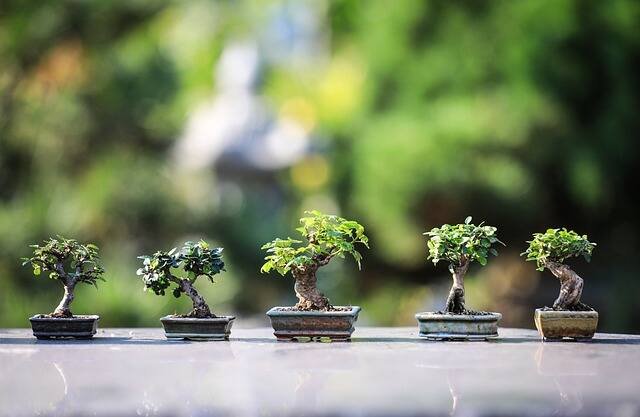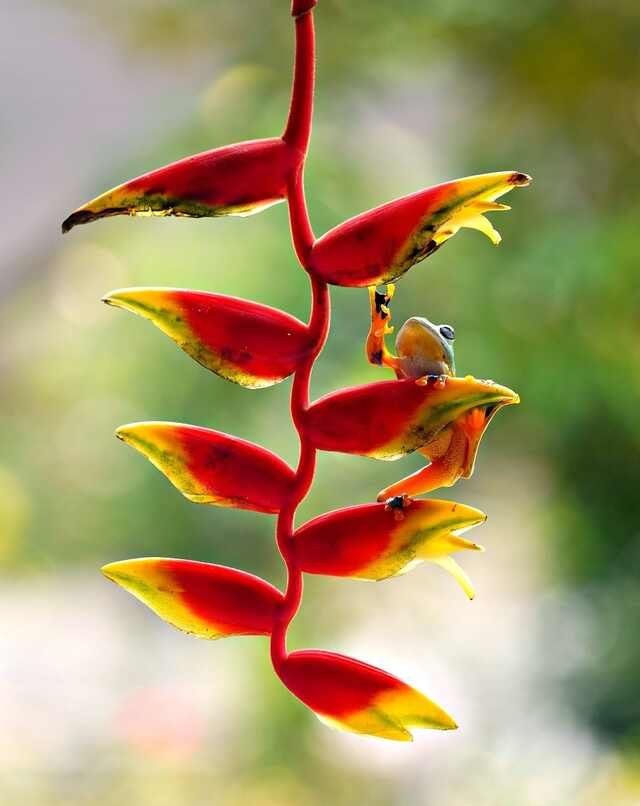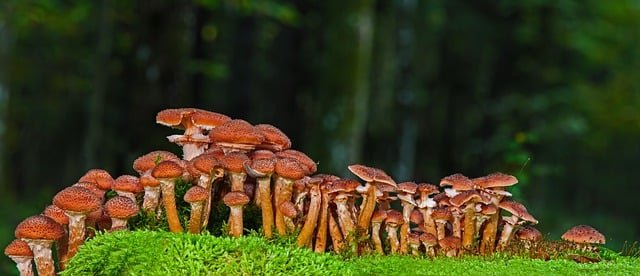Nearly everyone likes bonsai trees. Miniature trees—how could you not love them? They’re pretty cool-looking. I mean, some of it I think it’s just like this contact with nature. You know, we’re talking about little miniature trees, so it’s a combination of horticulture and art. Yet there seems to be a lot of misconceptions around them. I heard people say that they all came from seeds that were radiated by the bombs that were dropped in Japan. I would guess it would be some sort of breeding program to stop their growth, but I have no idea. What’s even more of a mystery, even within the bonsai community, is the science behind bonsai. You know, even as a lifetime bonsai artist, I don’t fully know the science behind it. I mean, I have an idea of how it works, but I can’t fully explain it. And the answer isn’t what you think. That’s impressive. I never knew that, but it makes total sense when you think about it.
Beginning stages of Bonsai:
Similarly as other Asian practices, the specialty of bonsai began in China. Bonsai, the word bonsai is from a genuine perspective a Japanese word; it suggests tree in a plate. It was brought to Japan from China and subsequently refined in Japan and a short time later distorted all through the rest of the world. What are a piece of the customary confusions of bonsai trees? Different sorts. That the wire and stuff we put on them torment them. That they’re house plants. That is without a doubt awesome off course judgment. They’re captivating, they’re enchanting little trees by and large and individuals acknowledge that they cultivate them inside and they can’t, tragically. And so on, there are a ton of contemplations concerning bonsai out there that aren’t definitively superfluously careful. A bonsai tree is only a typical tree controlled to change into a microscopic.
Bonsai Genetics:
Bonsai are not genetically dwarves. That means if you take a seed from a bonsai and plant it, it’s going to grow up to be a normal tree. Theoretically, any tree can become a bonsai, but some do better than others. Some people think that they’re genetically dwarfed trees, and occasionally we’ll use one like that, but not really. We make full-sized trees smaller. So what would happen if you were to take, let’s say an old bonsai tree, and plant it in the ground and stop taking care of it? See that tree that’s sticking out over the roof there? That used to be a bonsai tree in a pot. In a pot? That was weak and I put it in a bigger pot and it rooted into the ground, then it just got too big and I just said the hell with it. The goal of bonsai is to make a miniature tree look fully mature.
How to Make a Bonsai:
Also, that is where the fine art becomes interesting. Number one, you realize we need to keep them little so extents are presumably the single greatest element that keeps them seeming to be genuine trees. It doesn’t make any difference in the event that it’s two inches tall or two feet tall or four feet tall, assuming that all that’s in extent, it’ll seem to be a genuine tree. Each tree should recount an account old enough, and bonsai craftsmen can achieve that by utilizing a couple of procedures. Most importantly pruning away stuff we won’t utilize, a great deal of additional branches and stuff like that, it additionally keeps them little. Everything the wire is utilized for is to shape and position branches and in some cases trunks. We utilize the wire to similar to twist the branch into position or drop it down or up and hold it there until it chooses to remain there. Better believe it, you can do a wide range of stuff to them. I mean you can twist branches this huge and they simply appear to disregard it on the off chance that you do it the perfect skill at the ideal time. We prune the roots. We remove them from the pot, cut the roots in some cases down the middle. The situation confines supplements; it’s in a little pot, the majority of the dirt blend we use is really inorganic, so there resembles no supplements in the actual dirt. So we give them enough to remain sound and flourish, however not such a lot of that they need to grow out of their developing circumstances. What’s amazing is as the tree gets less supplements, all development starts to dial back, the storage compartment develops more modest rings, and the leaves scale down definitely. Likewise, the leaves are smaller than normal also. The leaves are nevertheless the leafy foods aren’t. Limiting the supplements and the size of the pot confines the size that the leaves can get to. You know, even as a lifetime bonsai craftsman, I don’t completely know the science behind it. At the end of the day, I have a thought of how it functions, yet I can’t completely make sense of it.
The Secret to Bonsai Growth:
The answer lies in something called the apical meristem. Apical coming from the word apex, meaning “highest point”. And meristem coming from its meristematic cells also known as stem cells. These regions are stem cells found at the tips of the shoots and roots. The shoot apical meristem leads to the leaves, blossoms, organic products, and level of the tree. Foundational microorganisms are undifferentiated cells that have the ability to transform into any cell. For instance, a human undeveloped immature microorganism can separate into a platelet, a neuron, a skin cell, any cell in our body. Apical meristematic cells operate the same way and can differentiate into a host of other cells in the plant. So what normally happens is water comes up from the roots, through the trunk, up to feed the apical meristems. As apical meristems grow, they divvy a set amount of cells to form a leaf bump, which eventually differentiates into a leaf. Researchers didn’t know the mechanism behind bonsai leaf miniaturization, but they had two theories. That bonsai leaves have the same amount of cells as normal leaves, but the cells are smaller. Right, that the tree itself is being shrunk down on a cellular level. Right. Or? Or the cells were the same size, but there were just fewer of them. What do you think? The second one, the cells are smaller, I think the cells are smaller. Yeah, I’d say probably so yeah. Okay. Neither, no there’s got to be one? I would say probably the… I don’t know. 50/50 chance. I’ll say two just because, yeah I’d say the second one, yeah.
The Answer
The correct answer was the second one,r written by Körner and colleagues, it was discovered that not only were the cells the same size, in some cases, they were larger than their normal counterparts.
What made leaves miniature was the fact that there are fewer cells present in the leaf. The cutting of roots and lack of nutrients slows the growth rate of apical meristems, causing fewer cells to form a leaf bump, resulting in a smaller leaf.
But it’s just less of them. Less of them to divvy up everything out, that’s impressive. I didn’t know that at all.
What’s amazing is these trees don’t even know that they’re making a miniature leaf; they’re just growing and differentiating normally.
Think of it like making cookies. The components are exactly the same; the only difference is that bonsai’s have less starting material.
Researchers observed the greatest reduction of leaf area in broadleaf trees, with one species becoming 50 times smaller, while their conifers only experience a 5 to 8 times reduction.
Now these tiny leaves are also accompanied by tiny little trunks, and that’s because trunk size is a function of growth rate. The reasoning behind it is why make a huge trunk if you’re not transporting that much material?
Small leaves need less water and nutrients. And we’re also reducing the total amount of leaves on the tree. Giant sequoias can use up to 500 gallons of water per day.
Yeah, that’s basically the way it works. I mean, glad to hear that you know scientists think so too. I’m gonna go do some research. I wanna see, you know, like now I’m very intrigued.
Oh, that’s awesome! I kind of want to make our bonsai tree come back to life; it’s totally dead.
Closing Thoughts:
Now, I got to say, after writing this article, I have a brand new appreciation for bonsai. I mean I liked them before, but now I love them. And throughout the process, I made my very first bonsai tree, and I think it turned out great! I can’t stop looking at the thing.
Although I do have to say I was surprised to see a subset of people who weren’t as enthusiastic as myself when it came to bonsai. I mean, to watch some of the things we do sometimes, yes, it does seem cruel, and I can only speak for me personally. I never do anything to a tree that I think is going to harm the health of the tree. To me, that’s got to be number one.
Remember, the art of bonsai is mimicking nature. The twisting of the trunk and branches represent all the hardships a tree had to go through. These trees grow in places where it’s really strenuous; it’s tough on them. 120 degrees, no water for six months, snow, wind, whatever. And they survive. In a way, it’s brutally beautiful.
And yet these trees still grow in the face of adversity, and they do so perfectly. Bonsai shows that life can be beautiful within the struggle. It’s something that only mother nature can do. We can do all kinds of stuff. We can take tools and carve things and create deadwood and stuff, but we can’t touch what mother nature can do.
Trees never ask for a lighter burden, only for broader shoulders.
I mean, is there anything you want to let people know about bonsai?
Yeah, don’t try to grow them indoors, and don’t be afraid of them. They’re just trees.



